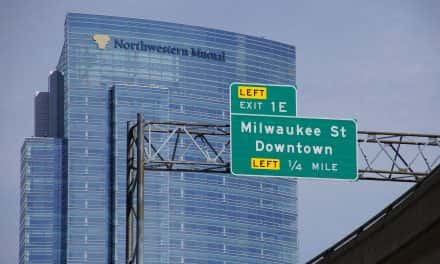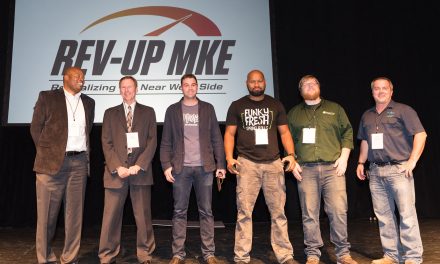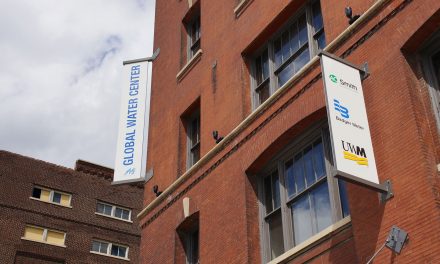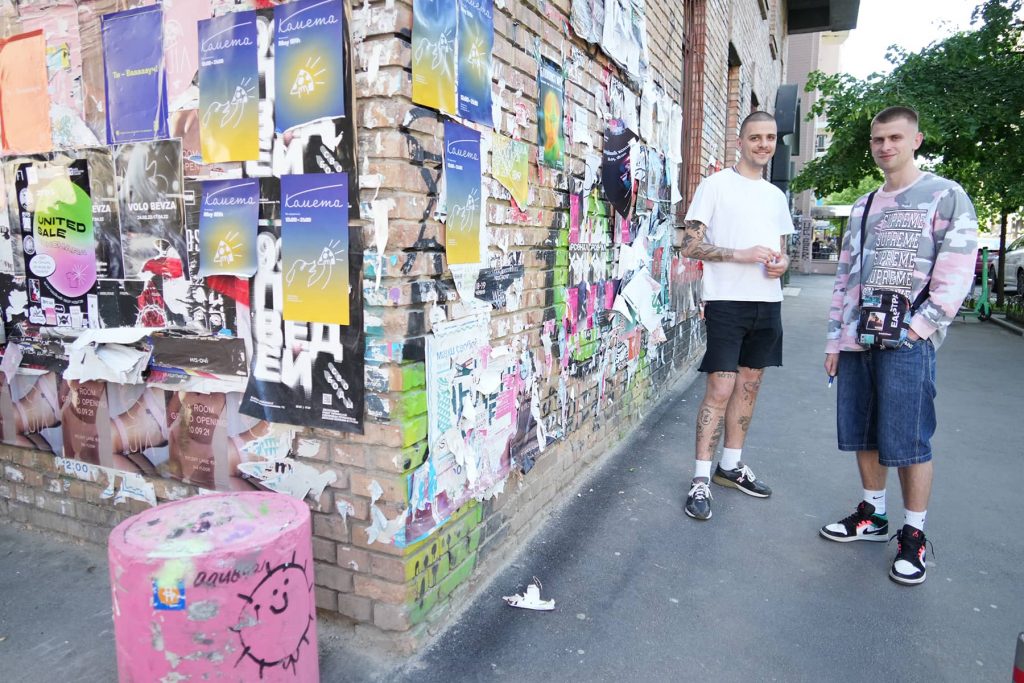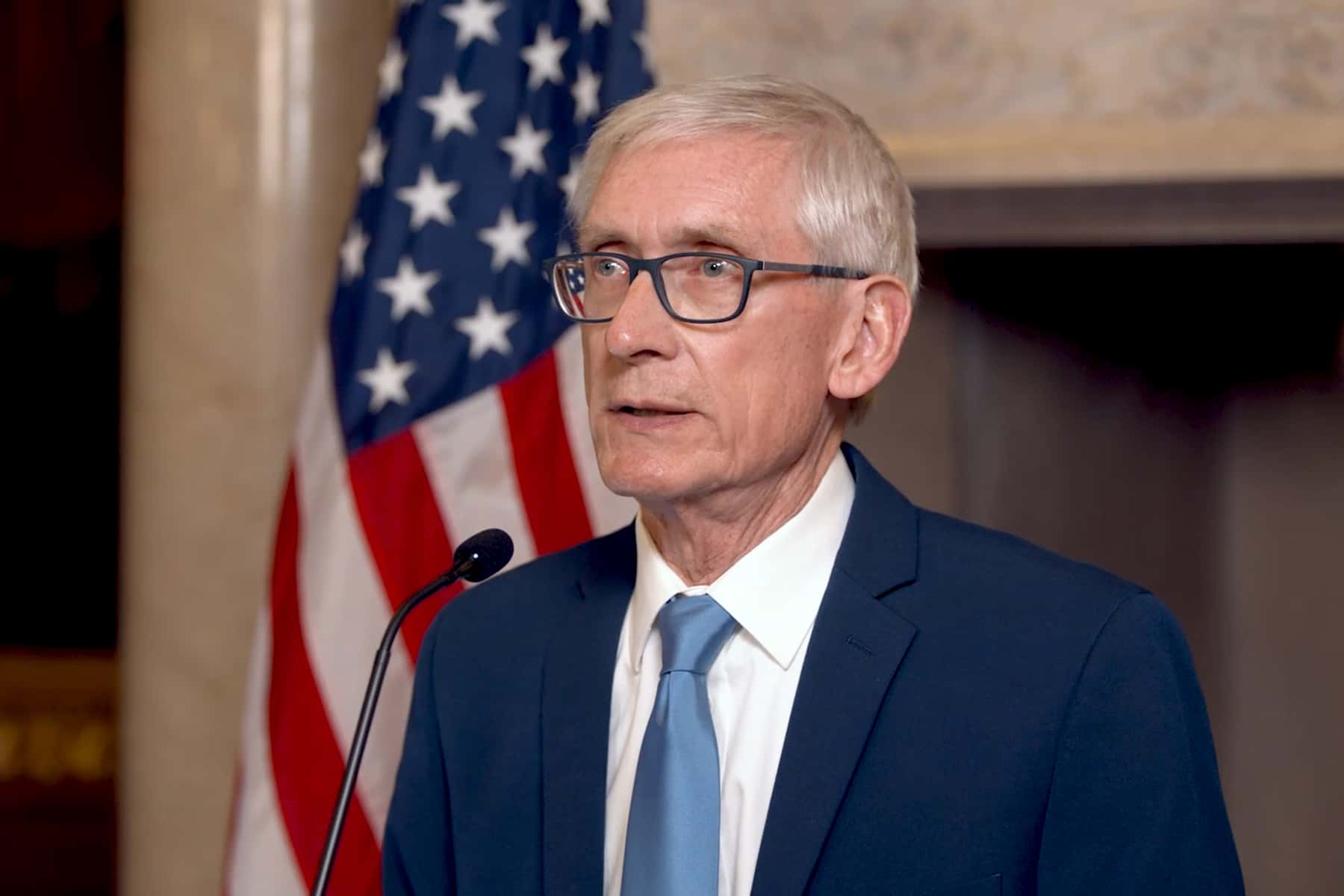
Governor Tony Evers delivered his 2021 State of the State Address on January 12. Due to the pandemic, the governor spoke to Wisconsin officials and residents in virtual format this year.
Remarks by Governor Tony Evers as prepared for delivery:
Good evening, Wisconsinites.
Welcome, and thank you for tuning in this evening.
I’m Tony Evers, and I’m incredibly proud to be the 46th governor of the great state of Wisconsin and to deliver my 2021 State of the State Address to you tonight.
The Wisconsin Constitution requires that each year the governor communicate the condition of our state. Now, tonight is probably the first time in our state’s history a governor has delivered a state of the state address virtually and without a live audience. That means there’s good news and bad news: the bad news is there won’t be any applause or boos here tonight, but the good news is that means tonight’s speech will take a heckuva lot less time and since you’re watching at home, you can be as rowdy as you’d like from the comfort of your couch.
To begin tonight, I’d like to acknowledge some individuals who aren’t here with us.
The first person’s name is Ben Belzer.
Ben worked in my office, traveling with me about everywhere I went during my first two years as governor. If you’ve seen me out and about, there’s a good chance Ben was by my side—you might’ve even talked to him. And for a good portion of this pandemic, Ben was also in my circle of five until we lost him tragically this past summer. My team and I think of him often, striving always to be more like Ben in word, in deed, and in service. We sure wish he could be with us here tonight. We miss him every day.
Also not with us tonight are the more than 5,000 Wisconsinites who have died due to COVID-19. They were firefighters, healthcare workers, nuns, educators, entrepreneurs, community pillars, students, veterans, volunteers, bird watchers, card players, and Packers, Brewers, and Bucks fans. They were moms and dads, brothers and sisters, friends, and coworkers, and they are loved and missed by many.
So, tonight, I’d like to dedicate this address to those who we’ve lost this year and the families—the sons and daughters, moms and dads, grandparents and grandkids, friends, and neighbors left behind—who, on top of everything else this past year, have had to mourn the loss of someone they love.
And I’d ask you to join me briefly in a moment of silence to honor the lives of these Wisconsinites we lost to COVID-19.
Thank you.
As I stood before you and delivered my second state of the state address last year, the world and our state looked much different than it does now.
We were coming off a successful year making a down payment on our priorities like fully funding our public schools, fixing our crumbling roads and bridges, and making healthcare more accessible and affordable. We put $330 million in general school aids—the largest in more than a decade—and funded a $97-million increase for special education—the largest ever. We provided more than $465 million in new funding for our local roads, highways, and transit aids. And even though my efforts to expand healthcare were rejected by Republicans in the Legislature, we made critical investments in improving mental health treatment, supporting our direct care workforce, and increasing funding for our rural healthcare providers.
So, we began 2020 with our sights set high.
We were announcing a three-pronged plan to address our dairy crisis and support rural communities across our state. We were looking ahead to redistricting on the horizon, creating the People’s Maps Commission to draw our state’s next maps after the 2020 Census and ensure that people choose their elected officials, not the other way around. We were pushing to return to our state’s commitment to two-thirds funding for our kids and our schools, and we were going to increase aid to our most rural school districts while providing $130 million toward reducing property taxes through equalization aid.
Then things changed overnight.
We were going about our daily lives when a novel coronavirus hit, and we had to take urgent, necessary steps to prevent the COVID-19 pandemic from spreading.
Suddenly, states and countries were asking folks to shelter in place, kids and educators were learning and teaching from their kitchen tables, and so many began working from home, and those that weren’t were worried about what this virus might mean for them if they went to work each day.
When I delivered my last state of the state address, no one could have predicted the rest of the year would go quite like it did. What we now know about 2020 is that it was among the most unrelenting years many of us have ever experienced.
If someone had said then that our special sessions to address our dairy crisis and provide funding for our schools and property tax relief would be met with inaction—if someone had said then that after visiting all 72 counties my first year in office, last year we’d only be visiting each other virtually and learning to use a thing called Zoom—if someone had said then that in a year’s time, we’d have lost more than 5,000 of our family members, friends, and neighbors due to the worst public health crisis in a century—we wouldn’t have believed them.
I said then that the year would challenge the depth of our empathy and the strength of our selflessness — and it did, but in more and different ways than we could have ever imagined.
It’s tempting to look back on the year and see a year rife with heartbreak, setbacks, and loss. Because it was.
From our healthcare workers to our students, Wisconsinites have been stretched to the limit—making immeasurable sacrifices for our neighbors, for our families, for our loved ones, and I know so many are tired.
Our statewide efforts to contain this virus were met with costly litigation and resistance nearly every step of the way.
We were grateful to be able to invest nearly $2 billion in our state’s response. We distributed more than 26 million pieces of PPE and sanitizing supplies to hospitals, long-term care facilities, veteran’s homes, and frontline workers. We provided more than $379 million to help stabilize our economy and support nearly 53,000 of our small businesses, more than 15,000 farms, and our lodging, hospitality, and tourism industries. We invested more than $200 million in helping communities across Wisconsin recover, but we know we have a long way to go to get our economy back on track.
And unfortunately, many of the challenges of 2020 will no doubt carry into this new year.
But as we reflect on these challenges—the magnitude of what this past year presented us, and the work we did together to prepare, adapt, and respond—let us also remember to grant ourselves grace, to permit ourselves perspective, to recognize our own resilience.
Yes, our reverence and our patience and our tolerance have been tested by the times and by each other. Yes, sometimes doing what’s best and what is right lost out to elected officials who chose politics and political interests instead. Yes, there were moments where we could’ve offered a greater empathy, more humility, and better community than what we gave to those who, too, were carrying the burden of the last year.
But despite all of this, we also managed to find strength in the struggles we shared.
We found faith in the kindness of strangers—who brought food and groceries to those who couldn’t leave their homes, packing meals for kids so they wouldn’t go hungry even if they weren’t in school, sewing and donating masks for others who couldn’t afford their own.
We found resolve in the voices of thousands marching and echoing the call and repeat of generations in demand of the equity and justice we promised and have not yet delivered.
We found perseverance in our farmers, growers and farm workers, and producers who kept working to make sure we kept food on our tables, in our Main Street businesses and restaurants who reimagined and retooled to keep customers and our communities safe, in the men and women of our Wisconsin National Guard who have heeded the call to serve time and again—from our statewide testing to working the polls—during what’s been the longest Guard activation in our history.
We found courage in hospital rooms and hallways—in the doctors and nurses and healthcare workers who’ve braced themselves on the way to work and walked through the door anyway, who’ve comforted our loved ones when we couldn’t, who, even today, have never stopped showing up for us.
This past year asked a lot of us, and we’ve asked a lot of one another. But when we did, we found that the strength of our state is in what we are willing to face together—what we are willing to do for each other, especially when our neighbors need us the most.
Although the year is behind us, the remnants and hardship of 2020 remain.
I know folks are eager to put this virus in the past—frankly, I am, too. I know so many are ready to get vaccinated and get back to life as we knew it, and we are working to distribute vaccine doses as quickly and as fairly as we can.
And while Congress recently provided additional resources to help support families and our state’s response, we know it will likely not be enough to continue fighting this virus until we’re through distributing the vaccine.
There’s always more work to do, and just as we have this past year, we’re going to get it done. Now two years into my first term as governor, we’re not going to slow down. In fact, we’re just getting started.
Our forebearers gave us a mandate to go forward. And we have, as we must.
But “forward” was a challenge to us then just as it is here today not to move for movement’s sake. In this state, forward isn’t a metric of those who’ve moved the fastest, it’s the measure of the strides we make when we all go together.
As this past year has underscored, our course over the past decade has proven unsteady and uneven. For years, our state has plowed ahead unencumbered by the hopes of those we might leave behind.
We are reminded now that in the fight for progress and prosperity we each share responsibility.
And it begins with broadband.
This pandemic has underscored—and in some ways, exacerbated—the digital divide that exists across our state. This pandemic has shown us firsthand that lack of access to high-speed internet continues to be a setback for kids, families, and businesses across our state.
Students, educators, and schools making the shift to virtual learning were faced with a lack of access or unreliable connections that made it difficult to teach, engage, and learn. Folks trying to stay healthy and access basic healthcare services had trouble using telemedicine or other alternatives to visit with their doctor when they couldn’t go in-person. And businesses working to adapt and provide online ordering or payment options didn’t have the technological tools or lacked connectivity in their area. And in some communities, consumers didn’t have the internet connection to take advantage, even if they could have.
According to the FCC, more than 430,000 people who make up 25 percent of our state’s rural population lack access to high-speed internet. Our state ranks 36th in the country for accessibility in rural areas. Earlier this year, our Wisconsin Economic Development Corporation released its “Wisconsin Tomorrow” report. It highlighted broadband as one of three priorities to begin our economic recovery saying this: “Fixing broadband in Wisconsin is not a moon shot; it’s not insurmountable. But it is critical to economic development and recovery and must happen now.”
So, tonight, I’m excited to declare 2021 the Year of Broadband Access.
I’m proud that my first biennial budget invested $54 million into broadband across our state—the largest state investment in broadband in our state’s history. Well, not to be outdone, we’re going to do it again in this budget—except this time we’re going to nearly quadruple it.
My 2021-23 biennial budget will invest nearly $200 million over the biennium into broadband—that’s five times the amount invested in the 2013, 2015, and 2017 budgets combined.
It’s 2021, folks—having access to high-speed internet is no longer a luxury, it’s a necessity. Every Wisconsinite across our state should have access to reliable, high-speed internet. Period.
Now, lack of broadband access isn’t the only issue this pandemic brought to the forefront this past year.
The last two months of the year, I worked with Republican leaders on a COVID compromise. And I called on the Legislature to pass that compromise as the very first bill this session and to send it to my desk without delay. But tonight, I’d like to talk about the very second bill that should be passed by the Legislature this session, and that’s a bill to fix our broken unemployment system.
Since the beginning of this pandemic, we saw an unprecedented influx of unemployment claims—it exceeded the number of claims even during the Great Recession. To put it in perspective, over the course of four years from 2016 through 2019, the Department of Workforce Development handled 7.2 million claims. Well, since March, the DWD received 8.8 million claims alone—1.6 million more claims than the four previous years combined.
So, as we saw a massive number of new, incoming claims, we got to work reassigning state employees from other divisions or agencies and hiring and contracting new workers. We brought our staffing up from about 500 employees in our Unemployment Insurance Division to more than 1,800 to answer phone calls, process claims, and follow up with folks who’d applied for benefits. And during that time, the DWD paid nearly 600,000 claimants more than $4.6 billion in unemployment insurance benefits to folks across our state.
But the bottom line is that our unemployment system isn’t designed to handle the massive numbers of modern days, which has contributed to delays in processing claims, required more time to implement new federal programs, and made it harder to get benefits out the door.
Our antiquated system isn’t quite as old as I am, but it has been around since Richard Nixon was president—this system isn’t new, and these problems aren’t, either. And Republicans and Democrats alike are to blame. The fact of the matter is that previous administrations and more than a decades’ worth of legislators have known this system was outdated and couldn’t handle an economic crisis like the one this pandemic presented, and they never took the time to fix it. And to make matters worse, the Legislature spent the last decade passing laws deliberately making it even harder for people to access these critical supports when they need it the most, exacerbating the problems with our already-outdated system.
This past year brought to bear the inaction of my predecessors and members of this and previous legislatures who avoided their responsibility and duty for far too long. Well, I’ll tell you this: it’s gone on long enough. It ends tonight.
I’m announcing today I will be calling a special session of the Legislature to take up a plan to modernize our unemployment system and help ensure nothing like this happens to the people of Wisconsin again.
We know that replacing this system will take years—that’s why it should’ve been done sooner, but it’s also why we now have not another moment to waste. No politics, no posturing, send me the bill and let’s just get it done.
And I want to make myself clear: if the Legislature continues to ignore this problem—if they gavel in and gavel out like they’ve done before, if they leave this problem for another administration, another generation—the people of this state will hold them accountable at the ballot box.
Because this year, we’re also going to fix another problem that’s plagued our state for more than a decade: our gerrymandered maps.
Last year during my State of the State address, I announced I would be creating the People’s Maps Commission—a nonpartisan redistricting committee of Wisconsinites from each congressional district who would draw fair, impartial maps based on the 2020 Census.
So, for the past several months, The People’s Maps Commission, selected by a panel of three retired judges, has gotten to work. They’re hosting virtual hearings in every congressional district to hear feedback and input from people across our state to begin drawing The People’s Maps.
Now, Republicans in the Legislature said right away they’d ignore any maps the Commission created. That’s not a surprise given that in 2011 the Legislature hired private attorneys to draw our maps in secret and behind closed doors. And because the Legislature wrote themselves out of Wisconsin’s public records law, they were able to destroy many of the public records from that process.
Well, I believe—and I know many of you at home do—that the people should get to choose their elected officials, not the other way around. Wisconsinites don’t want maps that favor any political candidate or party—we just want maps where either candidate can win. Folks, that’s just common sense.
So, tonight, I’m announcing that my biennial budget is going to make sure that the Legislature draws our maps in the light of day, in the public eye, and with public input by requiring public meetings for the map-drawing process. And that’s why we’re also going to prevent the Legislature from destroying records from the map-drawing process because the people of our state deserve to know how these maps are drawn and by whom. And finally, and most importantly, we are going to require the Legislature to take up The People’s Maps, which will be drawn not by any political party or high-paid consultants, but by the people of our state.
Folks, it’s time we look to the people, not politicians, to draw maps that are fair and impartial.
Now, make no mistake: I do not underestimate the challenges that this new year may bring, or the grief we’re still grappling with, the ramifications we’ve yet to fully realize, the new problems that may arise still this year.
But as sure as we will face struggles, we will take them on together.
We’ve made it through a difficult year, folks. While it was discouraging, we aren’t defeated. While it was trying, we’re tough. Wisconsin, we’ve never been known for being timid, and we’re sure not going to start today. Our people, our state, and our democracy have withstood tests before, and we will again answer the call to go forward unfazed.
Be well, be healthy, and stay safe. Let’s get to work. Let’s move forward, together.
Thank you, and On, Wisconsin!


